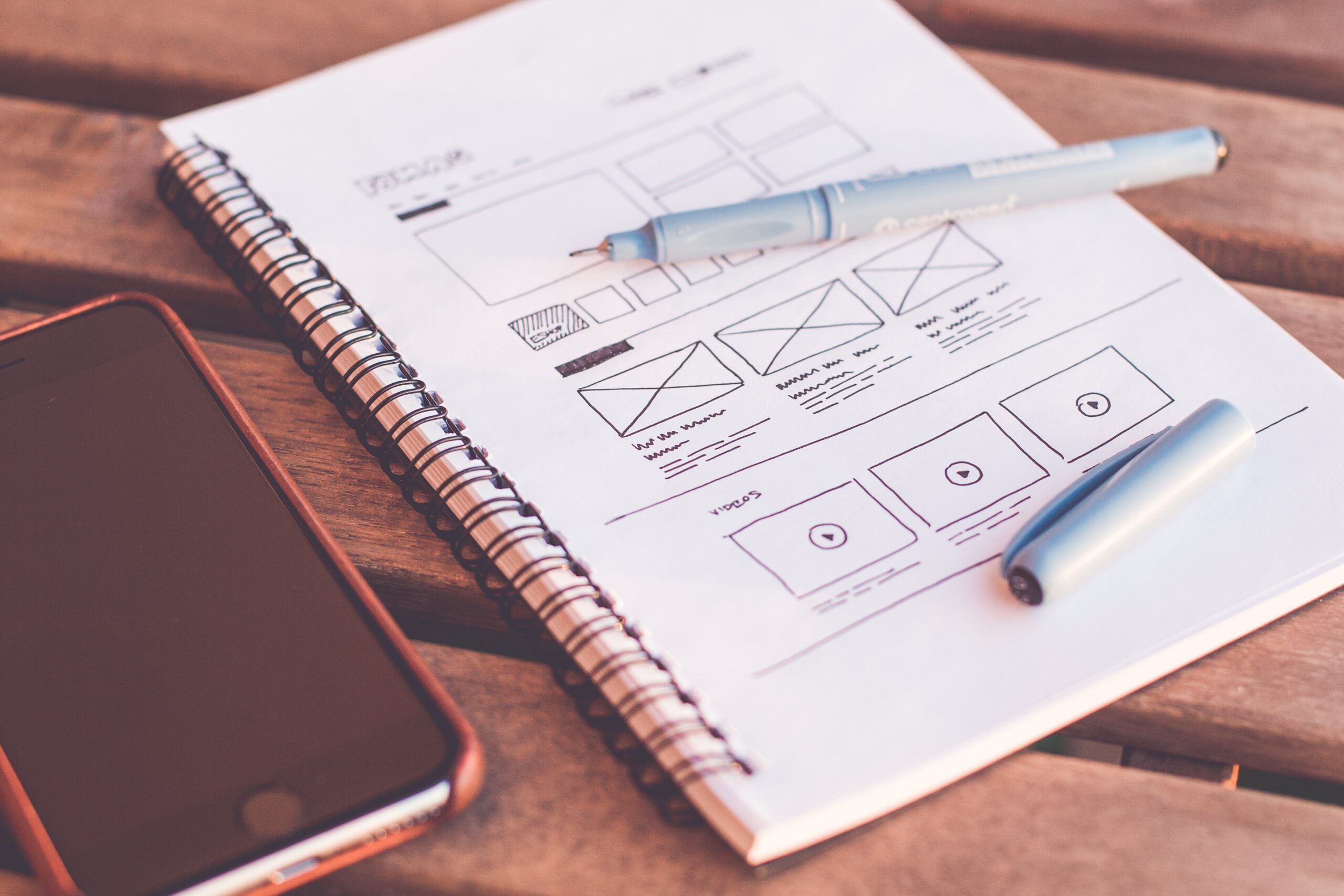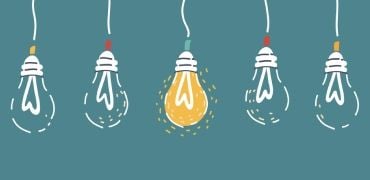What is Product Design and Is it a Good Career Choice?

Many people will tell you that product design as a discipline is new. And they are right in their own way. While the art of product design is as old as civilization, it did not exist as a well-defined profession until a decade ago. However, technically speaking, the first ‘product’ was designed by the homo sapien who thought of sharpening rocks to make tools. He/she just may not be aware that a product had been created! So in response to what is product design, we would say it is a process through which a product is conceived as an idea, designed in reality, and marketed to a specific target audience. If you are considering a product design career, let’s take you through ‘what is product design’ in detail.
What is Product Design?
While the exact definition of product design may vary from one expert to another, we would define it as:
The process of imagining, creating, and iterating products that help solve a problem or address specific needs in any given market.
In the age of digital technology, it is important to mention that such products can be digital or non-digital in nature. The training one needs to design products in each of these categories is also slightly different as is the scope of the jobs. Digital products require a thorough understanding of User Experience (UX) and User Interface (UI). Meanwhile, non-digital products like furniture require knowledge of design history, ergonomics, etc. However, understanding the basic concepts of design is a must for all product designers.
You must think that what is product design but aesthetics! But, that is not a true reflection of this profession. As Smashing Magazine says, “Design thinking is a human-centered approach to innovation that draws from the designer’s toolkit to integrate the needs of people, the possibilities of technology, and the requirements for business success.” Hence, product design includes knowledge of the product, profitability, scalability, technology, and a deep understanding of human needs.
A Brief History of Product Design
 It is important to mention here that we cannot look at ‘what is product design’ in isolation. Design, per se, is an overarching concept that ties in with art, sculpture, and architecture, and bleeds over into product, which is the commercial arm of design. A product could be anything starting from a cigarette to a spacecraft. While individual products were always designed, these product designs were not classified into mass movements until the Industrial Revolution. We’ve listed some of the landmark design movements and also the products they produced.
It is important to mention here that we cannot look at ‘what is product design’ in isolation. Design, per se, is an overarching concept that ties in with art, sculpture, and architecture, and bleeds over into product, which is the commercial arm of design. A product could be anything starting from a cigarette to a spacecraft. While individual products were always designed, these product designs were not classified into mass movements until the Industrial Revolution. We’ve listed some of the landmark design movements and also the products they produced.
1: Industrial Revolution and Mass Production
During the Industrial Revolution, there was a distinct attempt to ‘mass produce’ everything. This could be seen clearly in the products of these times. So, when James Hargreaves designed the ‘spinning jenny’ in 1764, he set the precedent for product designers to follow.
2: World Wars, Cartoons, and Animation
Did you know that cartoons proliferated in an attempt to entertain soldiers at war, especially during the Second World War? This was the beginning of the American animation industry that produced several products since. In fact, toon merchandise like a Mickey t-shirt or a Goofy cap also dates back to this movement.
3: Pop Culture and the Illustration of Color
The word ‘pop culture’ was used by the British to define the contemporary culture of the US in the 1950s. In a gist, it meant consumerist, loud, and anti-traditional. Pop culture has influenced so many products that we still use like the Pepsi bottle with blue, red, and white, or the logo and merchandise of McDonald’s.
4: Minimalism and the Arrival of UX
Minimalism which focuses on using the bare necessities in a design is an Asian philosophy resurrected in response to the maximalist era of pop culture. The best example of a minimalist design is an Apple phone that packs so much functionality using very limited elements.
Product design process: What are the phases?
 Product design is a step-by-step process that runs for years sometimes. Each step is important in the scope of the product’s design and development. Let us break down ‘what is product design’ into different phases for clarity:
Product design is a step-by-step process that runs for years sometimes. Each step is important in the scope of the product’s design and development. Let us break down ‘what is product design’ into different phases for clarity:
Phase 1: Idea Generation
The idea for a new product comes from various sources. It could come from customer feedback or a competitor’s best-selling product. But, the most relevant and long-lasting products come from real-life pain points. These are products that actually solve problems for the target market.
Phase Two: Screening
Not every product design idea that is pitched in a firm sees the light of day. In fact, most organizations have a rigorous screening process to weed out not-so-viable product ideas. During the screening process, the company looks at a product idea through many filters: price, profitability, competition, longevity, etc.
Phase Three: Concept Development
For the products that survive screening, the next phase is concept development. In this phase, a ‘Strengths, Weaknesses, Opportunities, and Threats’ (SWOT) analysis is done on the product idea to assess its value. Then, the market is segmented and the target market for the product is identified so that it might have a relevant pitch.
Phase Four: Product Development
This is the phase in which the actual product is developed. First, a prototype is developed and the product is tested with a pilot. If the pilot or soft launch is successful, the product is produced at scale.
Phase Five: Commercialization and Rollout
The launch and commercialization is an activity that requires careful planning and execution. At this stage, the marketing team creates end-to-end promotional campaigns with several customer touch points and runs across channels.
Types of Digital Product Design
There are mainly three types of product design:
- System Design: This type of design usually involves sorting products into logical categories. An iconic example would be that of a supermarket where the designer is expected to stock the shelves in the most logical way to increase sales and improve efficiency.
- Process Design: This type of design is used to tackle navigation in a complex system like an airport or an e-commerce website. The navigation of the system here is the main product as it determines User Experience (UX) and sales.
- Interface Design: If we are looking at a product that needs a human-first approach, then interface design is suitable. This type of product design looks at the aesthetic journey of the product. For instance, have you noticed how fast food joints usually have elements of red and yellow in their decor and logo? It is because these colors are associated with hunger and quick gratification.
ALSO READ: What Does a Product Manager Do? Top 10 Things You Must Know!
What Tools do Product Designers Use?
What is product design if not art? And to bring this art to life as a viable commercial product, product designers use a multitude of different tools. Some of these tools are free while others have paid and free versions. The list is as follows:
| Product Design Tool | Used For | Why We Love It |
| Figma | Page design | It’s a collaborative tool that is great for teams working remotely |
| Affinity Designer | Illustration | It’s free. No subscription is needed. |
| Icon Jar | Icon management | Plenty of other apps support the icons from this tool |
| Fable | Motion design | Has easy to understand tutorials and no downloads needed |
| Fathom Analytics | Analytics | Has an easy-to-understand data reporting structure |
| Contrast | Color accessibility | UX for this tool is its best feature |
| ProtoPie | Prototypes | Allows easy sharing of product prototypes |
| Notion | Project organization | Has a free plan with a very generous collection of features |
| Webflow | Web development | Has easy-to-learn tutorials |
| Right Font | Fonts | Contains a huge array of fonts to choose from |
Source: 20 of the Best Product Design Tools to Use in 2022
Is Product Design a Good Career?
According to InVision, product design is one of the highest-paid design jobs in the world. This is primarily because of the skill gap that exists in the market. So, not only is product design a well-paying job, but it also offers plenty of scope for growth. Learn more about how to become a product designer, and a product designer does each day.
Product Designer Salary
The range of product designer salary packages is quite wide. As per Indeed.com, a product designer in the United States makes between $56,374 to $144,944 per annum. The average salary for a product designer, thus, stands at $90,394.
You can get a detailed look at product designer salary packages based on roles, location, and job titles here.
What skills do I need to be a product designer?
Product design as a career is strongly skill-driven. According to Indeed.com, the following are the skills that impact a product designer’s employability and career growth:
- Coding: A product designer needs to have a basic understanding of C++, CSS, and JavaScript.
- Visual Design: Layout, color theory, and typography are critical elements of visual design that a product designer has to ace.
- User Interface (UI) Design: In order to design the UI, the product designer must have copywriting, navigation, and front-end development skills.
- UX Design: For a smooth UX, product designers must be competent at wireframing, prototyping, and information architecture.
- User Research: At the forefront of product design are people who will use the product. So, a research-oriented mindset helps product designers build successful products.
- Soft Skills: Product design is not a hardcore technological job; it involves people skills as well. No individual can build a product by themselves, it requires teamwork, communication, attention to detail, and critical thinking.
And what would be the best way to ace all these skills? Take a course online. Emeritus has a whole range of product design and innovation courses for you to explore.
For content collaborations and feedback, write to us at content@emeritus.org





